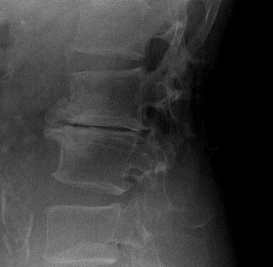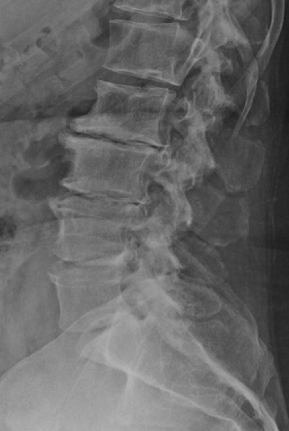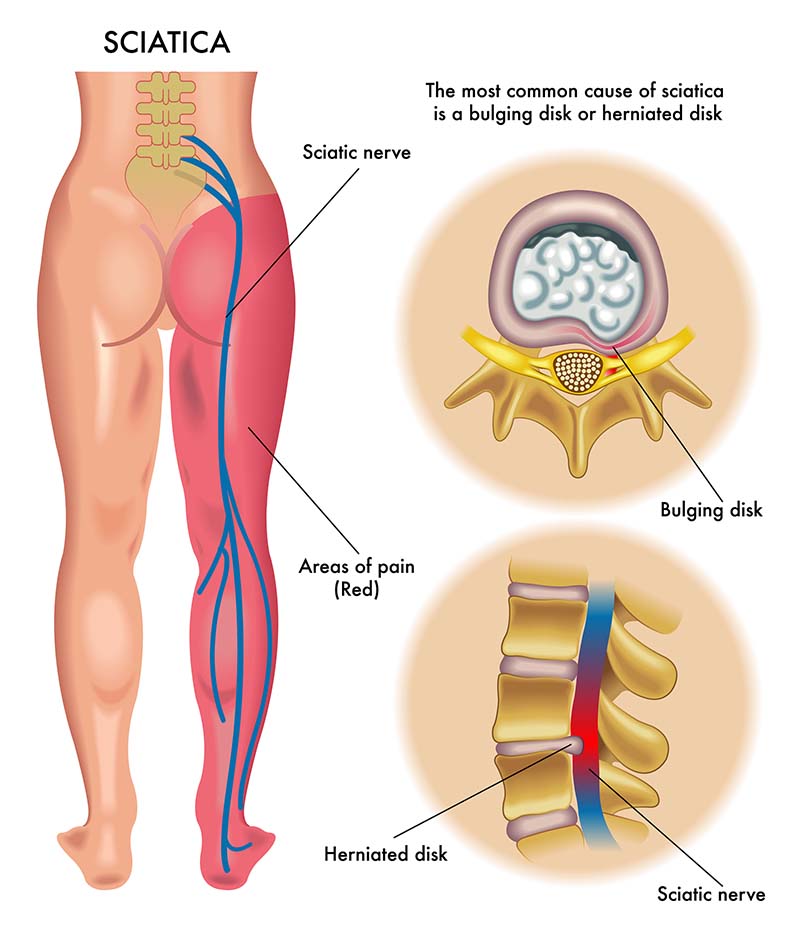 There are two categories of pain that can come from the lower back and run down into the leg, these are "Referred pain" and "Radicular pain". Listed below is a brief explanation of both:
There are two categories of pain that can come from the lower back and run down into the leg, these are "Referred pain" and "Radicular pain". Listed below is a brief explanation of both:
Referred Pain - This is pain felt in regions of the leg such as the buttock, groin or back of the thigh that is actually coming from small nerves deeply seated in the region of the lower back. Referred pain from the lower back does not have a predictable pattern and will vary from person to person. For example, injury to a small ligament or small muscle deeply seated in the lower back can actually refer pain downward in to the back of the buttock and thigh. Referred pain is a unique phenomenon of the nerve system and by definition is "pain felt in the body at some place other than its actual place of origin" (World English Dictionary).
Radicular Pain - This is pain felt in regions of the leg such as the buttock, back of the thigh, back of the calf and foot that is actually coming from large nerves deeply seated in the region of the lower back. Radicular pain from the lower back does have a predictable pattern and will be similar from person to person. Radicular pain from the lower back is often called "Sciatica". The term Sciatica refers to a pain running down the leg that follows a particular pattern formed by the "Sciatic Nerve" a large nerve coming from the lower back. Typically the course of this nerve pain starts in the lower back and then proceeds to run down behind the buttock and back of the thigh and further extends down into the lower leg, calf, ankle foot and toes.
The two categories, referred and radicular pain are often mistaken one for the other and must be carefully discerned by your doctor through proper diagnostic procedures.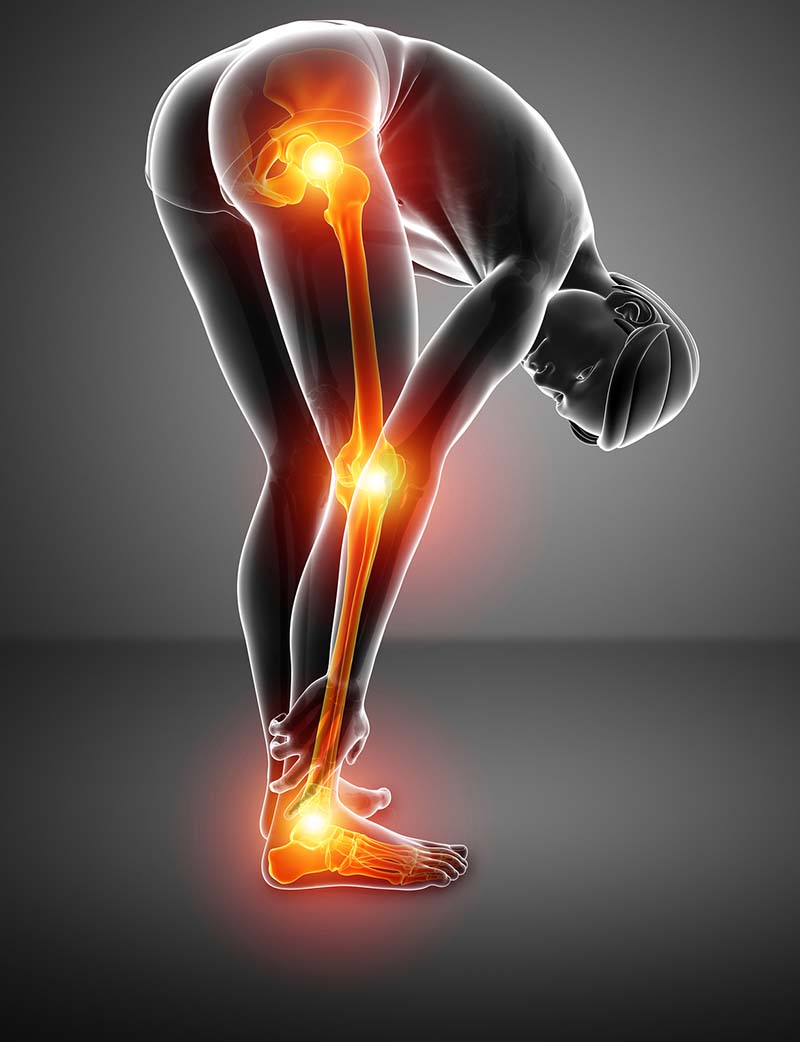
Causes of Referred and Radicular Leg Pain
Referred and Radicular pain into the leg can arise from similar sources. The defining factor is which nerves are being affected the small or the large? Some of the more common conditions that cause Referred and Radicular pain are listed below:
Common Source of Radicular Pain
- Disc Herniation
- Disc Degeneration
- Spinal Stenosis
Common Source of Referred Pain
- Spinal Imbalance (Subluxation)
- Facet Syndrome
- Disc Degeneration
- Spinal Stenosis
- Arthritic Degeneration
- Muscle or Ligament Strain / Sprain
As you can see by the charts above there is some overlap for the two types of leg pain so leave it to your Chiropractor to determine which one you have. There are severe conditions of the lower back that actually involve both types. The conditions that can cause Referred and/or Radicular pain are listed below:
1. Spinal Imbalance: Misalignment or restricted movement of one or several segments within the lower back leads to “Spinal Imbalance” and is a common cause of lower back pain. The Chiropractic term for this is “Subluxation”. It simply means improper function or alignment within the lower back. It would be similar to the front end of your car being out of alignment which leads to a “wobbly” or “shaky” ride. In the lower back it leads to irritation of the nerves which in turn causes pain. The type of nerve pain that would typically come from spinal Imbalance would be "Referred Pain". Spinal imbalance can be effectively treated through the use of Chiropractic adjustments thus alleviating the lower back pain.
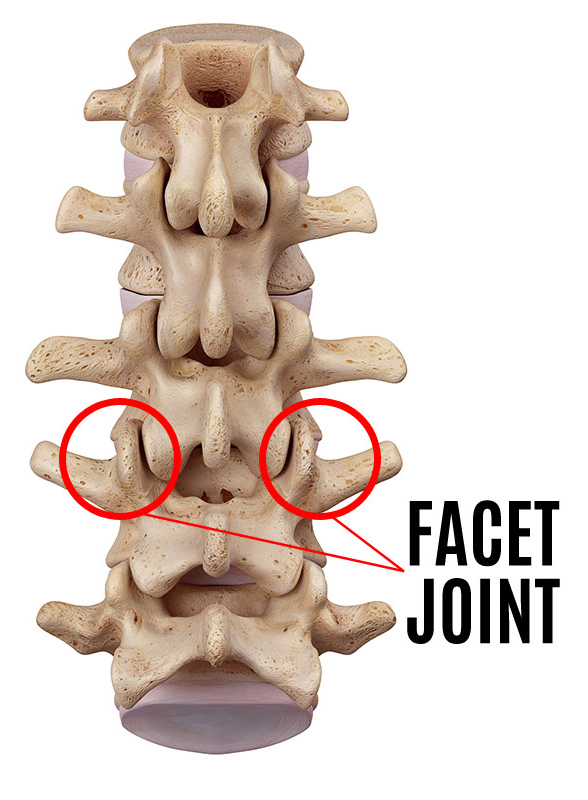
2. Facet Syndrome: On the back side of each vertebra are a pair of joints that serve to stabilize the vertebrae while also allowing certain movements to take place. These joints are called “Facets”. This is a common area of strain from heavy lifting, repetitive twisting and prolonged forward or back bending. It is estimated that 15% to 40% of lower back pain stems from the facets. The type of nerve pain that would typically come from Facet Syndrome would be "Referred Pain". Problems with the facets respond very nicely to a combination of Chiropractic adjustments, exercise and appropriate life style changes.
3. Disc Degeneration: The little cartilage pad that sits between the vertebrae are scientifically known as “vertebral disc’s". Due to either injury or age related wear and tear, these discs can deteriorate. When this occurs the disc begins to flatten and the vertebrae come closer together closing off the openings where the nerves make their exit. This in turn leads to irritation of the nerves which results in pain. The type of nerve pain that would typically come from Disc Degeneration would be either "Referred Pain" or "Radicular Pain" and possibly both depending the severity of the disc degeneration and which nerves are being affected. Disc degeneration can be helped through a combination of Chiropractic adjustments, Cox Flexion Distraction, physical therapy, nutritional supplementation, exercise and appropriate life style changes.
4. Disc Herniation: Due to injury or strain the little cartilage pads that sit between the vertebrae can shift causing them to bulge or herniate and contact the very delicate nerves in the area. This in turn can cause local lower back pain or pain that travels all the way down the leg to the foot and toes. The type of nerve pain that would typically come from Disc Herniation would be "Radicular Pain". Disc herniation can be effectively treated with Cox Flexion Distraction, a form of traction done by the doctor which helps to reduce the pressure inside the disc thus reducing or eliminating the disc bulge. For detailed information on this procedure click on the "Spinal Decompression" link on this web site.
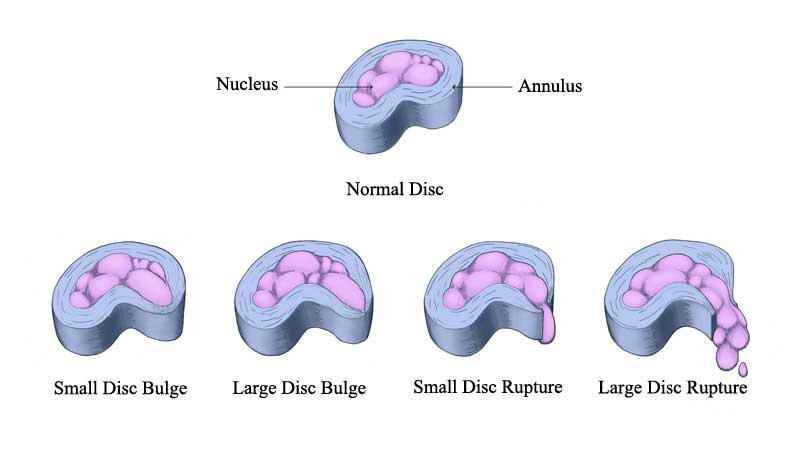
5. Spinal Stenosis: Spinal stenosis is the narrowing of the spaces in the spine that the nerves exit from resulting in compression of the spinal cord or nerve roots. It is the long term result of spinal degeneration or arthritis and is typically associated with disc degeneration and significant loss of disc height. It is primarily a condition of the elderly. The type of nerve pain that would typically come from Spinal Stenosis would be either "Referred Pain" or "Radicular Pain" and possibly both depending on which nerves are being affected. When treated properly it does respond favorably to Chiropractic care. One study showed that lumbar spinal stenosis patients improved by 76% and disability improved by 73% in 57 patients treated with "Cox Flexion Distraction" which is a method used in this office.
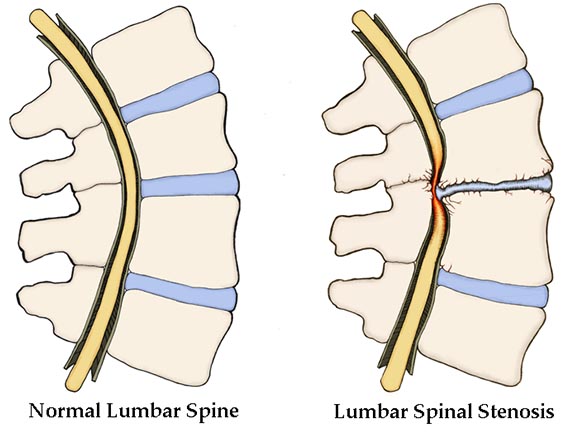
6. Arthritic Degeneration: Due to age related wear and tear or a history of injury, the bony structures around the vertebrae can breakdown and deteriorate which is medically known as Osteoarthritis. This leads to the formation of bone spurs which can contact the delicate nerves in the area causing lower back pain. The type of nerve pain that would typically come from Arthritic Degeneration would be "Referred Pain" although when severe it could cause both "Referred Pain" and Radicular Pain". Arthritic degeneration can be effectively treated with Cox Flexion Distraction, a form of traction done by the doctor that helps to separate the vertebrae and relieve the pressure on the nerve structures. Along with Chiropractic adjustments and physical therapy, the traction helps to restore movement in the arthritic areas making it less likely that the spurs will come into contact with the nerves. Supplementation with a good joint formula can also be helpful in the treatment of arthritic degeneration of the spine.
7. Muscle or Ligament Strain/Sprain: Due to overuse as in weekend sports or gardening or an event like a car accident, the muscles around the lower back can be subject to more strain than they can handle thus injuring some of the muscle fibers. Medically this is known as muscle strain. Muscle strain leads to inflammation which in turn leads to lower back pain. The type of nerve pain that would typically come from Muscle or Ligament Strain/Sprain would be "Referred Pain". Through the use of Chiropractic adjustments, massage, physical therapy, exercise and appropriate lifestyle changes, muscle strain can be effectively treated and resolved thus eliminating the neck pain.
Paresthesia
(Pins and Needles)
Paresthesia is a diagnostic term that refers to a feeling of tingling, prickling, numbness or burning that can be felt in the legs and feet. Most of you have experienced temporary paresthesia or "pins and needles" of your leg when you sat with your legs crossed for too long a period of time. All of the sudden you noticed that your leg was asleep and tingling and so you got up and walked it out.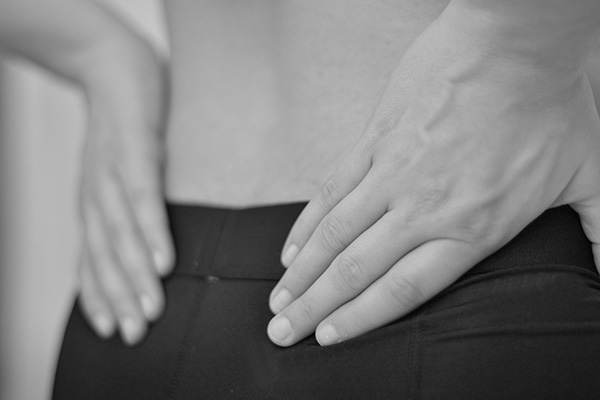
What is the cause of Paresthesia (Pins and Needles)
Temporary paresthesia is caused when too much pressure is placed upon blood vessels that supply oxygen and nutrients to a nerve for too long a period of time, irritating the nerve or disrupting its function. Once pressure is removed from the blood vessels and the blood begins to flow, the nerve "wakes up" or begins to properly function again and the condition goes away within a few minutes.
Chronic paresthesia is more complicated and is due to a variety of neurological conditions. Disorders such as strokes or TIA's (Transient Ischemic Attacks - Mini Strokes) can cause ongoing paresthesia in the arms or legs. Carpal tunnel syndrome, tarsal tunnel syndrome and other nerve entrapment syndromes can also be the root cause behind paresthesia or "pins and needles" in the arm or legs. Serious conditions such as multiple sclerosis or brain tumors and aneurisms can also be a root cause behind paresthesia.
In our office, the most common cause for paresthesia is the subluxated or misaligned vertebrae. When a vertebrae misaligns, it puts too much pressure on the exiting nerves causing pain or sometimes just causing numbness and tingling which is medically known as paresthesia. The good news is that subluxations can be corrected or reduced often times eliminating or minimizing the paresthesia as pressure is relieved off of the involved nerves.
For more information on Paresthesia or Pins and Needles visit the two websites below:
http://en.wikipedia.org/wiki/Paresthesia
http://www.ninds.nih.gov/disorders/paresthesia/paresthesia.htm
If you, or a loved one, are experiencing pain contact our office to schedule a free NO obligation consultation with the doctor or email Dr. Garber with a question concerning your case for a quick response. Garber Chiropractic Care Center 770-386-7707
Chiropractic Care and Pain Relief for Cartersville, Acworth, Taylorsville, White and Euharlee GA.

